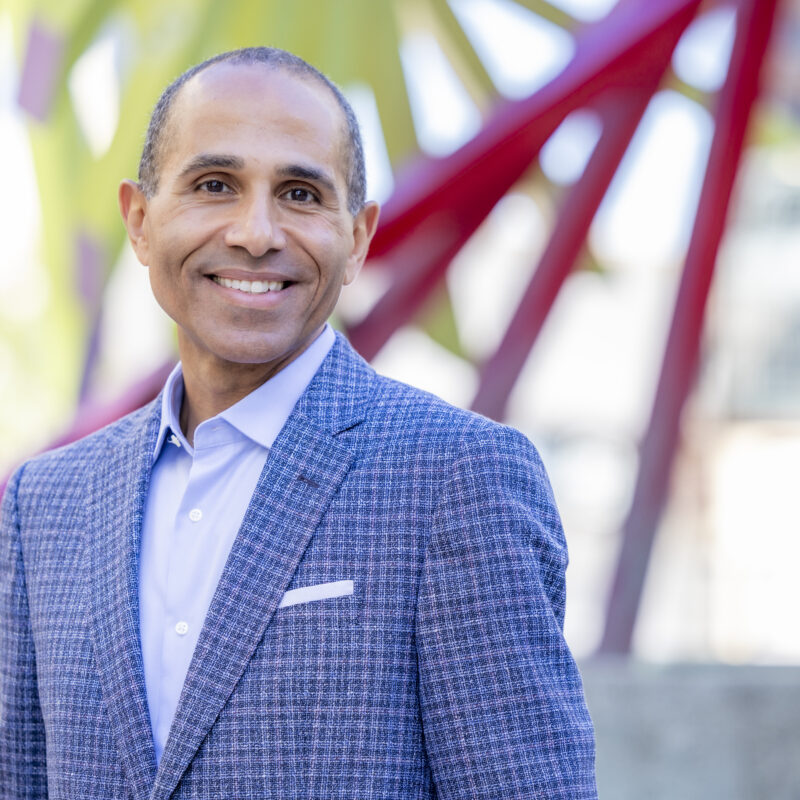In March, I celebrated eight years as part of the team at The California Wellness Foundation and six months on the job as CEO. I’ve spent a significant amount of my time recently meeting with people inside and outside the foundation, deepening relationships with staff, board, peers, and partners across the state. It’s been one of the most rewarding parts of my work.
My message has been simple – I’m committed to leading with hope, trust, and courage, and I’ve seen those values reflected back to me in many ways. Today I’m more excited than ever about the future of the foundation and our work in partnership with others.
Cal Wellness is at another inflection point in its 32-year history. Over the last decade, we have evolved from a well-regarded grantmaking organization to become a social change philanthropy, an institution that has committed to using all its resources – grant dollars, endowment investments, voice, and influence – to advance its mission. We’ve helped improve the health and wellness of the people of California, and yet daunting challenges remain. In fact, the headwinds seem stronger than ever for those of us committed to equity and racial justice.
Now is the time to reflect on the progress we’ve made, what we’ve learned, and how we can evolve next to realize our vision of a California where everyone enjoys good health and experiences wellness. And I want to keep you updated as our thinking evolves. With that in mind, here’s what we’re up to at Cal Wellness.
Looking Back
Nearly a decade ago, we launched a 10-year grantmaking program we call Advancing Wellness. The grantmaking is driven by the belief that health is a human right and that everyone – regardless of race, gender, education, economic position, or legal status – should have the opportunity to enjoy good health and experience wellness. Advancing Wellness also has been a flexible framework that supports our commitment to responsiveness, including an open application process and multiyear, core support grants.
Over the years, we have adapted our grantmaking to meet emerging and urgent needs, including our Advance and Defend Wellness campaign in the wake of the 2016 election, COVID-19 response, attacks on reproductive freedom, and the continuing movement for racial justice and reparations. We’ve also explicitly sharpened our focus on race and racism as one of the greatest barriers to health and wellness in California and the nation.
To help us understand our role as a foundation in making positive change in communities, last year we partnered with the Center for Effective Philanthropy to gather feedback from both grantees and declined applicants. We received high marks for some aspects of our work, but results were mixed, which has prompted us to rethink some of our administrative practices and to recommit to building relationships, not just moving money, through our grantmaking. We’ll be sharing those CEP survey results, our insights, and related actions in the coming weeks.
We also are reviewing our Advancing Wellness program, particularly the last five years since our midpoint assessment. We’re looking at data on our grantmaking, reading grant reports, and inviting grantee partners from across the state to share their stories of impact. This summer we’ll be reviewing insights from these activities to understand where we’ve been successful and where we may have fallen short of our aspirations with Advancing Wellness. We will have more to share by the end of the year.
In the meantime, we know enough to be making some changes to improve how we serve grantee partners and grant applicants. This year we’ve made terrific new hires on our Programs, Public Affairs, Finance and Operations teams to bolster our capacity, and we are making some modifications to our Letter of Interest process to be more transparent about available resources and to respect the time and effort it takes for grant seekers to develop LOIs for submission. These are a couple of examples of how we’re working to organize ourselves to be of even greater service to communities and to provide clarity about changes that impact our grant partners.
Future Direction
So, where do we go next?
Later this year, after the November elections, we will embark on a review of our institutional strategy. We’ll be using what we’ve learned from the CEP surveys, the assessment of Advancing Wellness, and direct input from our partners and communities to make decisions about the focus of our work moving forward. During this time, we will continue our core work supporting communities through grants, investments, and public affairs activities. And we expect to begin 2026 operating under a new strategic framework that will align all our institutional resources to support grantee partners and California communities in bold and innovative ways.
As I look to the future of our work, a few things are clear. Our mission remains firm, and we continue to believe that wellness requires social and racial justice. We will continue to use all our resources, not just our grantmaking dollars, to advance our efforts. We stand firm in our identity as a responsive foundation – and we’re exploring what responsiveness means for us moving forward as we look to shift power to grantees and communities, rethink our practices, and reimagine what a philanthropic institution can be.
We are inspired by the work you are doing each day to advance wellness in California. The stakes are high for California communities, and we’re committed to leading this planning process with openness, attention to relationships, and clarity of purpose in meeting our mission. I look forward to updating you along the way.

